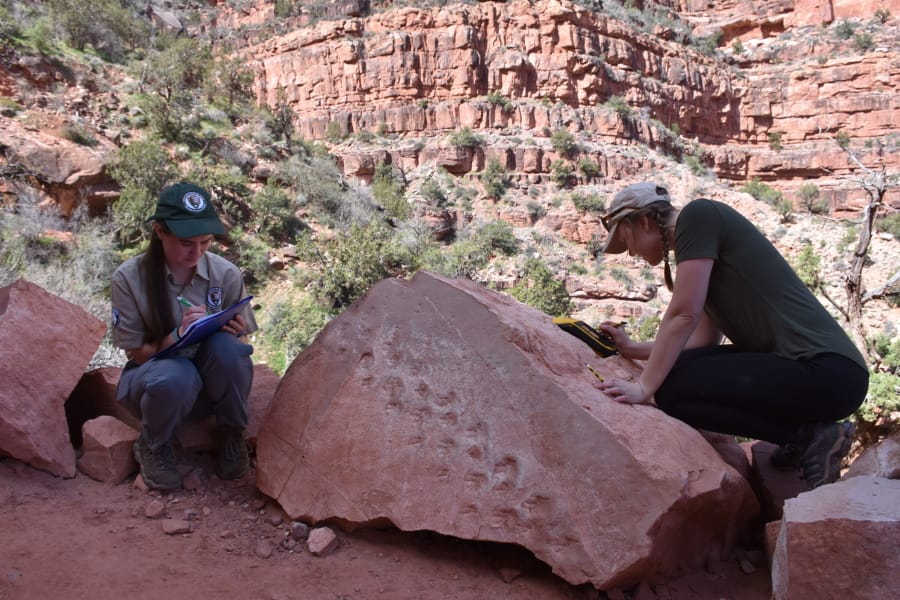FLAGSTAFF, Ariz. — It’s something like a modern-day chuckwalla, strolling in sand dunes on an island in what now is the Grand Canyon region.
That’s how Steve Rowland, professor emeritus of geology at the University of Nevada, Las Vegas, and his fellow researchers interpret fossil footprints that were revealed in a rock fall near a popular Grand Canyon hiking trail. They estimate the tracks are 313 million years old, give or take a half-million years.
At that age, they’d be among the oldest tracks of animals that lay eggs with a protective hard or leathery shell and the earliest evidence of vertebrate animals walking distinctively in sand dunes, Rowland, Mario Caputo and Zachary Jensen wrote in a research paper published in August.
“I think our interpretations will hold up very well,” Rowland said.
Not everyone is convinced the footprints were created by a single, four-legged animal that has a lateral-sequence walk, where the legs on one side of the body move in succession, followed by the legs on the other side. Or, that the footprints mark the point in evolution where animals were able to lay eggs with protective shells outside water.
Still, the paper raises interesting questions, said Mark Nebel, the paleontology program manager at the Grand Canyon.
“Some of the conclusions likely are going to be controversial,” he said. “There’s a lot of disagreement in the scientific community about interpreting tracks, interpreting the age of rocks, especially interpreting what kind of animal made these tracks.”
Rowland first heard about the footprints from a Norwegian geology professor, Allan Krill, who was hiking at the Grand Canyon in 2016 with his students and sent Rowland a photo.
Rowland made out claw marks common among reptiles in the 28 footprints, which he said help tease out the scarce skeletal record. Some of the earliest bones of similar animals that lay eggs outside the water were found in Nova Scotia around the same time the creatures would have been in what’s now northern Arizona, Rowland said.
“You could always learn more, and we certainly would like to find more tracks of those same animals,” he said.
The rock fell from the Manakacha Formation, made up of sandstone, limestone and mudstone that points to it being a onetime coastal plain when Arizona was near the western edge of the super continent, Pangaea. Dinosaurs weren’t around yet.



